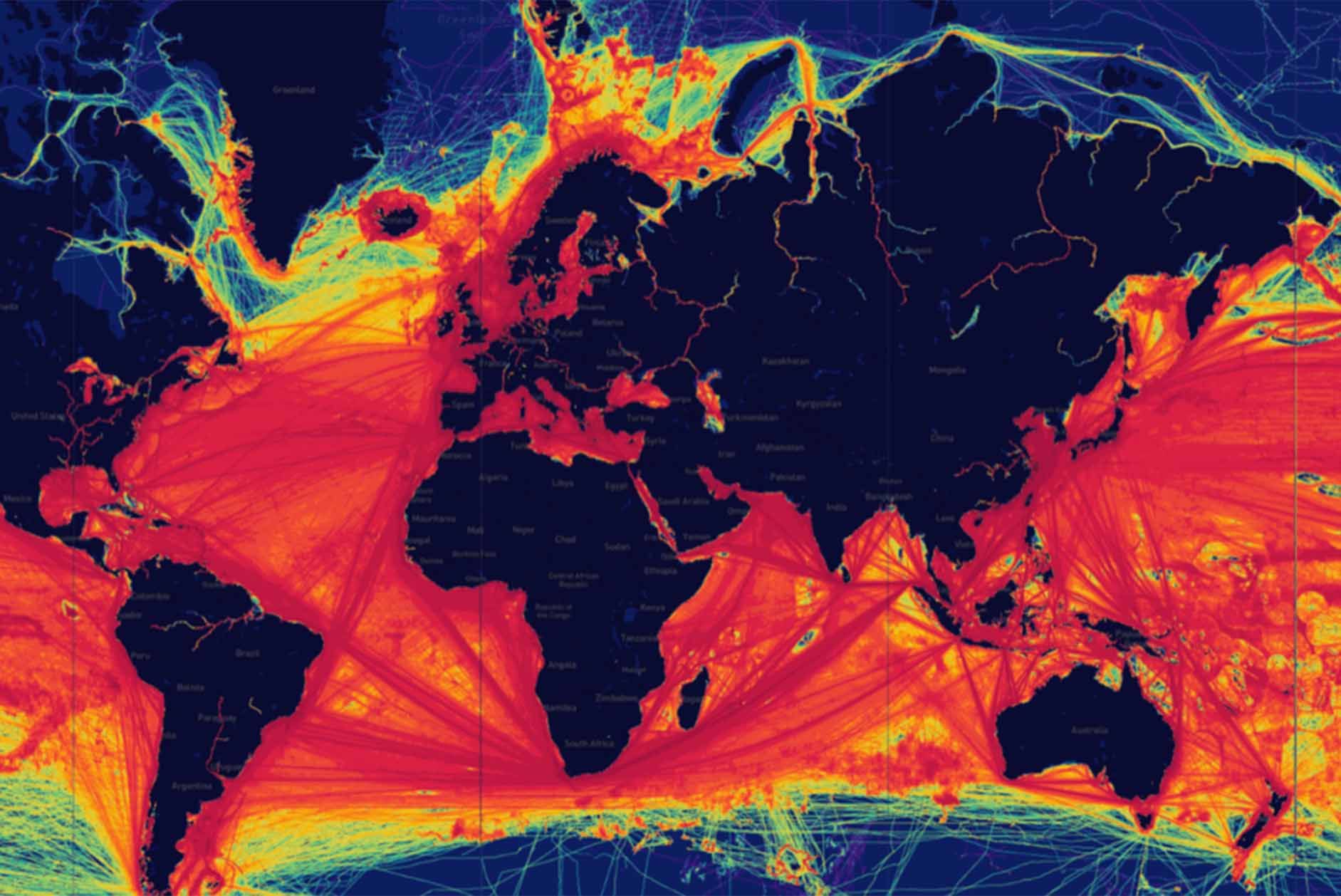BLOG
Telecom26 blog
The World’s Busiest Shipping Routes and Telecom26’s Maritime Connectivity Service

They were busy meeting our customers, partners and friends face-to-face to discuss how Telecom26’s portfolio of maritime connectivity services has been improved and expanded over the past few years.
As part of our ongoing research into the maritime connectivity needs of vessels of all sizes from huge containers to luxury yachts, everyone across our maritime connectivity business was very interested in the Density Maps for 2020-21 which were published recently by the Maritime Traffic blog. These show the most-travelled sea routes around the world, and enable people to track global vessel movements and identify shipping trends.
The accompanying article titled “Shining the spotlight on shipping’s busiest routes is a fascinating read”…
“As demand for global freight increases, maritime trade volumes are set to triple by 2050” whilst COVID has affected consumer behaviour, trade patterns and commodity prices fluctuated wildly.
“And in the aftermath of Russia’s invasion of Ukraine, trade routes looks set to be reset and reshaped once more throughout this year.”
The busiest five routes are:
- Asia to East Coast US via the Panama Canal.
“The Panama Canal transported a staggering 259,837,318 metric tons of goods, including coal, grains, minerals, metals, crude oils, fuels, and chemicals, across 12,245 transits in 2020.”
- Asia to Europe via The Suez Canel
“a crucial regional shipping hub for oil and hydrocarbons from Asia and the Middle East to Europe. The waterway is responsible for transporting about 7-8% of the world’s oil and 8% of liquified natural gas.”
Remember what happened last year when the Ever Given containership was stuck for six days”” Have a look at our blog Lessons From The Suez
- Europe to UK along The Channel which is home to the busiest shipping area in the world with over 500 ships per day passing through.
- North America to Canada using the St. Lawrence Seaway which “handles 40-50 million tons of cargo annually, comprising iron ore, grains, mining products, liquid bulk energy products, dry bulk cargo, and breakbulk cargo”
- Intra-Asia
“The Strait of Malacca, a narrow stretch of water 580 miles in length, connects three of Asia’s biggest economies: India, China and Japan. It also plays a fundamental role in connecting Thailand, Indonesia, Malaysia, Philippines, Singapore, Vietnam, Taiwan, and South Korea.
The Strait sees one quarter of global sea trade, handling about 50,000 vessels per year.”
Global Maritime Connectivity wherever you are in the world
Regardless of location, all of the routes listed above have a few things in common including the fact that the ships will need on-board connectivity.
Our recent blog “Nearshore Connectivity - perfect for vessels up to 30km off the coast” discusses how most ships and vessels spend the majority (up to 60%) of their time in port or in coastal waters.
They are therefore within range of land-based cellular networks which can provide coverage to vessels as far out as 30km.
So, instead of relying on costly satellite for data or connectivity, vessels can use these cellular networks.
However, sailing along multiple countries, of course, means hopping between multiple cellular networks to keep the people and devices on-board connected. And naturally juggling SIM cards or racking exorbitant roaming charges aren’t attractive to man or machine.
This is where our maritime connectivity service comes in. Telecom26 is a global maritime connectivity mobile operator and providing always-available voice and data connectivity for vessels of all shapes and sizes is one of our core services.
We offer bespoke maritime and marine communications services that integrate inbound and outbound roaming, with full support of data services. Our maritime services include:
- A full Cellular At Sea service for vessels of all sizes
- A Nearshore Connectivity Service which uses land-based cellular networks that reach up to 30km out to sea
- A Maritime IoT Service including private networks on-board vessels, oil rigs and platforms – and supply chain tracking
At the heart of our maritime connectivity service are our Global IoT eSIM cards. These provide data to all onboard devices via cellular data links. By onboard devices we mean Wi-Fi routers, container sensors, IoT networks and any system process that needs to connect to the internet, to a remote server or monitor.
Our Global IoT eSIMs can be inserted into any GSM (2G, 3G, 4G and future 5G) router, which we can also supply, as required.
Our Global IoT eSIMs can access most terrestrial and maritime networks. Not all networks are equally available – some offer better coverage in some locations than others. And, every country has its own range of terrestrial network operators. This means that, as a vessel moves along the coast, different networks may be available.
Always-On maritime connectivity for the world’s busiest shipping routes
So, as ships along the world’s shipping routes pass multiple countries, our maritime connectivity service means they can smoothly and seamlessly hop from one network to another, with no roaming problems when crossing borders. From China to the US, from Australia to Argentina. Connectivity across all routes.
Discussing your maritime connectivity requirements
If you would like to arrange a call to discuss how our maritime connectivity and maritime cellular communications services can help your vessels as they cross border then please get in touch.



